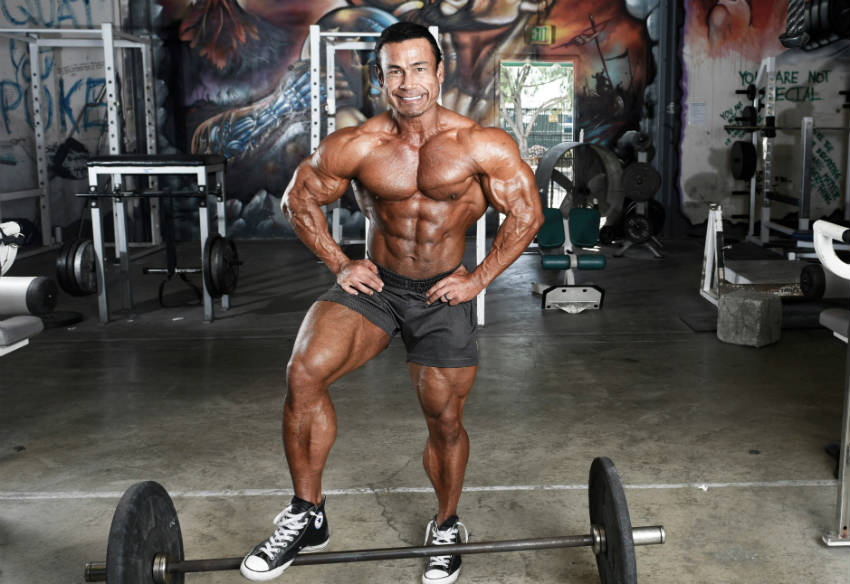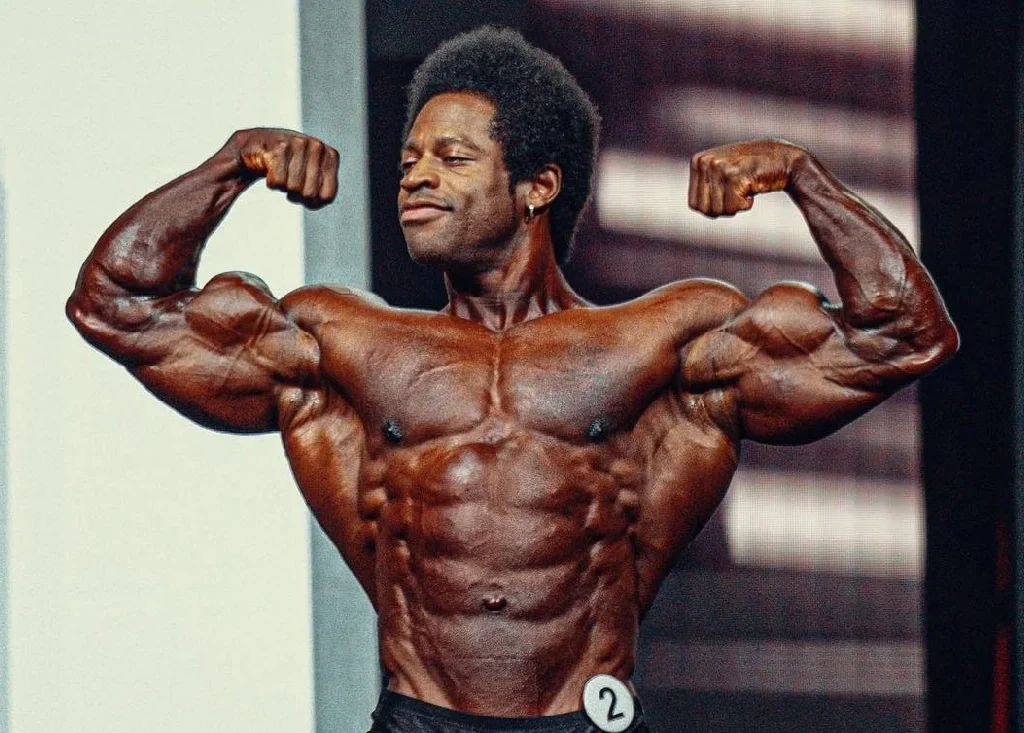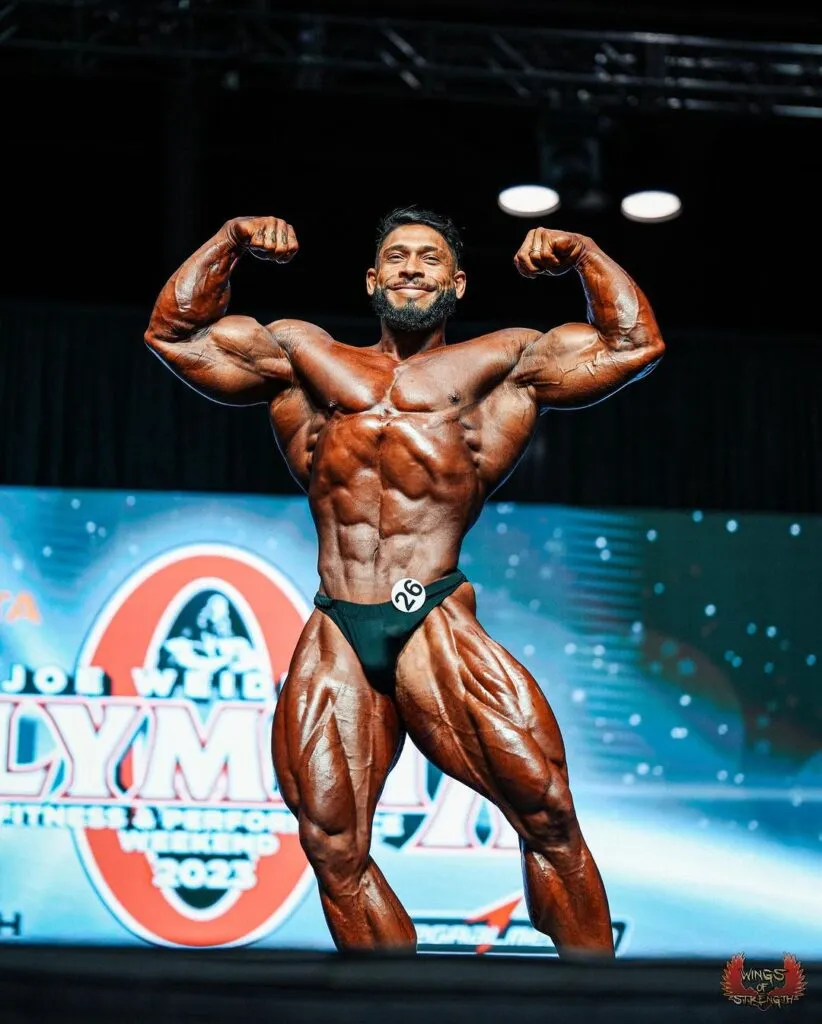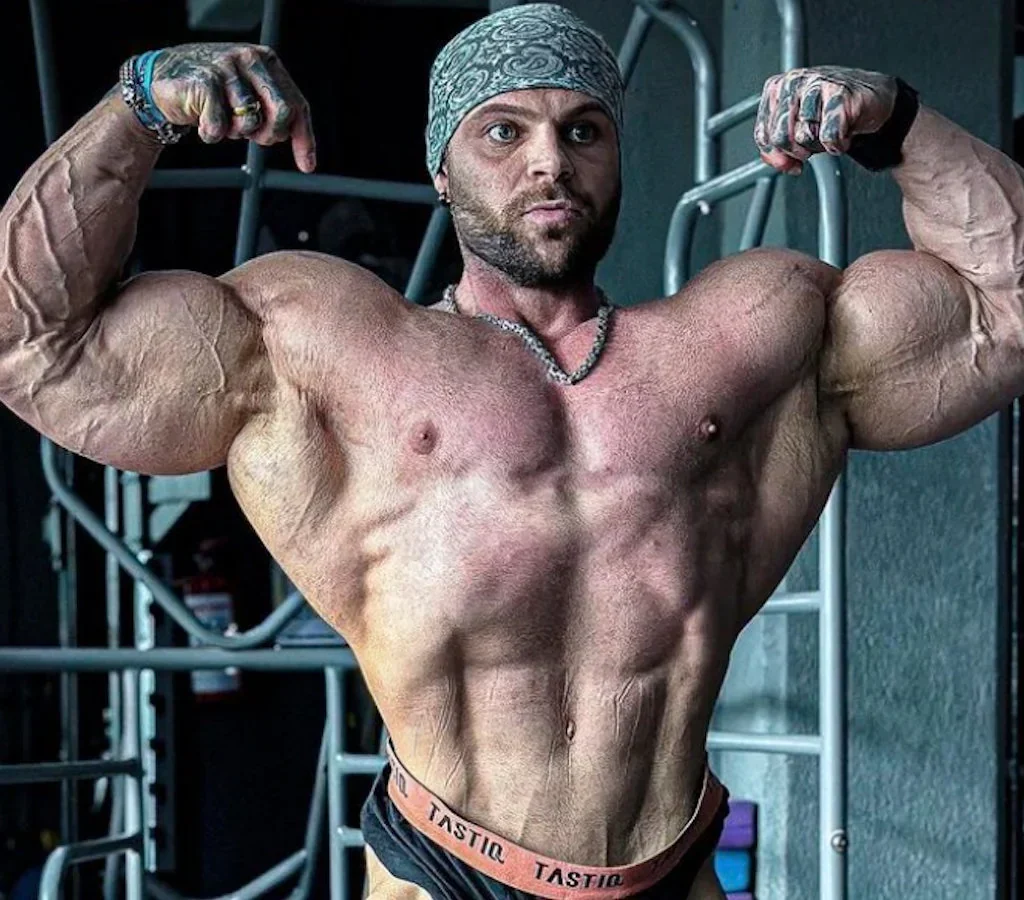The Inception of Classic Physique
The Classic Physique division was officially introduced by the IFBB Pro League in 2016 as a response to growing demand within the bodybuilding community. For years, fans and athletes had expressed concerns about the evolving direction of professional bodybuilding—particularly the extreme mass and size that had become dominant in the Men’s Open Bodybuilding division. While impressive, many felt that the bloated midsections and sheer size seen onstage were drifting too far from the aesthetics that defined the sport during its “Golden Era” in the 1970s and 1980s.
On the other side of the spectrum was the Men’s Physique division, which had become increasingly popular due to its emphasis on lean, athletic builds, but it was often criticized for its limited posing style, board shorts (which covered the legs), and for rewarding physiques that lacked the overall muscular development traditionally associated with bodybuilding. This created a noticeable gap between the two divisions—one that many athletes felt they didn’t quite fit into.
To bridge that divide, the IFBB introduced Classic Physique, designed specifically for those who wanted to bring back the visual style and proportions of legends like Arnold Schwarzenegger, Frank Zane, Serge Nubret, and Lee Labrada. These icons were known for their tapered V-taper, vacuum poses, artistic presentation, and balanced development across all muscle groups.
What set Classic Physique apart from the start was its strict height-to-weight ratio system. Competitors were assigned maximum weight limits based on their height, ensuring that no matter how muscular they became, they still maintained a harmonious, proportional, and aesthetic look. This innovative rule discouraged the excessive mass seen in the Open division and encouraged athletes to prioritize balance, symmetry, and the “flow” of their physiques.
Moreover, Classic Physique brought back traditional bodybuilding trunks, which allowed the full leg musculature to be showcased. Posing also became more artistic, with athletes required to perform a Classic Physique Routine that emphasized fluid transitions, elegant lines, and iconic poses like the vacuum or the archer.
This division quickly captured the imagination of fans and competitors alike. It rekindled the spirit of an era when bodybuilding wasn’t just about mass—it was about creating a physique that looked like a Greek statue come to life. Classic Physique didn’t just pay homage to the past; it redefined the standard of what many considered the ideal male form.
Within just a few short years, the Men’s Classic Bodybuilding Division became one of the most popular categories at shows like the Arnold Classic and especially at Mr. Olympia, where the Classic Division Mr. Olympia title is now one of the most coveted in the sport.
Champions of the Classic Physique Division
Since its inception, the Classic Physique Mr. Olympia title has been held by a select group of athletes who not only mastered the balance of aesthetics and muscular development, but also helped shape and elevate the division into a fan-favorite category. These champions represent the ideal of the Men’s Classic Bodybuilding Division—classic lines, symmetry, conditioning, and poise. Their reigns were not only victories for themselves but milestones in the evolution of modern bodybuilding.
1. Danny Hester (2016)
Danny Hester etched his name in history as the very first Classic Physique Mr. Olympia when the division made its debut in 2016. A veteran of the sport, Hester had competed across various bodybuilding federations and categories for decades, bringing a wealth of experience and a truly timeless physique to the stage.
At 47 years old, his win was not just a testament to longevity and discipline but a powerful statement about the goals of the division itself: to honor proportion and aesthetic quality over sheer size. Hester displayed a sculpted V-taper, refined posing, and classical symmetry that immediately reminded fans of bodybuilding’s golden years. His style, muscle shape, and maturity on stage set the tone for what judges and fans would come to expect from Classic Physique competitors.
Danny’s victory also sent a message to the bodybuilding world: this was not just a stepping-stone division. Classic Physique was here to stay—and to be taken seriously.

2. Breon Ansley (2017–2018)
The following two years saw the meteoric rise of Breon Ansley, who brought an entirely new level of refinement and density to the division. Winning back-to-back in 2017 and 2018, Ansley was known for his razor-sharp conditioning, sculpted midsection, and flawless symmetry. Standing at 5’7”, he utilized every inch of his frame to deliver a compact yet powerful silhouette that exuded old-school charisma.
Breon’s posing was elegant and masterful—arguably some of the best in the entire Olympia lineup, regardless of division. He often paid tribute to legends like Bob Paris and Frank Zane through his routines, evoking a strong emotional response from classic bodybuilding fans. His wins legitimized the division in the eyes of critics who initially viewed Classic Physique as a novelty.
More importantly, Breon inspired a wave of competitors with similar structures and aesthetics to pursue the Classic title, proving that size was not the only route to greatness. During his reign, the division’s popularity surged, and his rivalry with future champion Chris Bumstead created one of the most captivating storylines in modern bodybuilding.

3. Chris Bumstead (2019–2024)
No conversation about the Classic Physique division is complete without mentioning Chris Bumstead, the Canadian phenom who redefined what it means to be a champion in the modern era of bodybuilding. Affectionately dubbed “CBum”, Chris began competing in the division while still in his early twenties, and by 2019, he captured his first Mr. Olympia title—ushering in a new dynasty.
Standing at 6’1″, Bumstead brought a unique structure to the stage: towering height, flaring lats, a sweeping X-frame, and arguably the best vacuum pose seen since Arnold’s era. His blend of proportion, fullness, and conditioning became the benchmark for all Classic Physique athletes to follow.
What truly separated CBum from the rest, however, was his authenticity. With millions of followers across social media platforms, he became the face of Classic Physique, transcending the niche of competitive bodybuilding to become a global fitness icon. His transparency about physical and mental health struggles—including battles with autoimmune disease and anxiety—made him relatable and deeply respected.
Chris won six consecutive Classic Physique Olympia titles (2019, 2020, 2021, 2022, 2023, and 2024), tying and surpassing division records. With each win, his dominance grew, yet he remained grounded and committed to honoring the art and tradition of the sport. His posing routines were a masterclass in storytelling, set to cinematic music and performed with grace and power.
In 2024, after earning his sixth straight Olympia title, Chris Bumstead shocked the bodybuilding world by announcing his retirement from competition. Citing health reasons and a desire to focus on longevity and personal growth, CBum bowed out at the pinnacle of his career—leaving behind a legacy that many believe will be unmatched for generations.
His departure marked the end of an era but also opened the door for the next wave of elite competitors to rise. Though no longer competing, CBum’s influence on the sport—and especially on the Classic Division Mr. Olympia title—remains deeply ingrained in the culture of bodybuilding.

Rising Stars in Classic Physique
With the departure of six-time champion Chris Bumstead, the Classic Physique Mr. Olympia crown is now within reach for a new generation of elite competitors. The vacuum left by his retirement has ignited a fresh sense of rivalry, passion, and determination within the men’s classic bodybuilding division. A new era is upon us—one defined by fierce battles between rising stars who have already begun to etch their names into the sport’s growing legacy.
These athletes represent the future of Classic Physique, each bringing a unique blend of mass, symmetry, posing artistry, and global fan appeal. As the division evolves, the level of competition has become more intense, and the following individuals are poised to become standard-bearers in the post-Bumstead era.
Ramon Rocha Queiroz – “Dino”
Hailing from Brazil, Ramon Rocha Queiroz, popularly known as “Ramon Dino,” has rapidly emerged as one of the most prominent figures in Classic Physique. With an aesthetic structure reminiscent of golden-era legends and the mass to compete with anyone in the lineup, Ramon has proven himself a legitimate contender for the Olympia title.
Standing at 5’11”, Dino possesses wide clavicles, dense quads, and one of the most developed back physiques in the division. What sets him apart is his ability to present an incredibly balanced package—broad shoulders, tight waist, and round, full muscle bellies—all wrapped in crisp conditioning.
His posing has also matured significantly over the past few years. Each routine he performs pays tribute to the artistry of Classic Physique, demonstrating not only technical precision but emotional expression—a trait reminiscent of past champions.
Ramon’s rapid rise has made him a national hero in Brazil, where bodybuilding enjoys an enthusiastic and passionate following. Having placed 2nd to Chris Bumstead at recent Olympias, many believe that with CBum now retired, Dino is the most natural successor to the crown.

Urs Kalecinski – “The Miracle Bear”
From Germany comes the charismatic and incredibly gifted Urs Kalecinski, affectionately dubbed “The Miracle Bear.” At just 25 years old, Urs has become a fan favorite, known for his youthful charm, incredible stage presence, and razor-sharp conditioning.
Urs combines a tight, aesthetic waistline with dramatic V-taper, clean lines, and some of the most detailed hamstring-glute tie-ins in the division. His classic presentation evokes comparisons to Frank Zane, yet his mass and structure allow him to stand alongside more densely built athletes.
More than just a physique, Urs brings personality and marketability to the stage. His enthusiastic interaction with fans, combined with his entertaining social media presence, has earned him a global following. Despite his age, he has already amassed multiple top-five Olympia finishes and is seen as one of the few athletes capable of ushering Classic Physique into a new era of mass appeal.
As his muscle maturity continues to develop and his posing becomes more refined, Urs is considered a major threat to the Olympia throne.

Mike Sommerfeld
Representing Germany alongside Kalecinski is Mike Sommerfeld, a consistently improving athlete with one of the most aesthetically pleasing physiques on the circuit. Known for his flow and proportion, Sommerfeld blends impressive mass with classic lines, resulting in a silhouette that exemplifies the division’s standards.
Mike brings a vintage look to the stage—his round delts, small joints, and well-developed arms make for a balanced, symmetrical physique that fits perfectly within the Classic criteria. One of his most notable assets is his posing: smooth, confident, and reminiscent of the sport’s golden age.
In recent Olympias, Sommerfeld has climbed the ranks, making a name for himself with each performance. While not as flashy as some of his peers, he embodies the core values of Classic Physique—graceful presentation, proportionate development, and technical polish.
As he continues to refine his package, Sommerfeld is increasingly being viewed as a dark horse for the title, especially with the field now wide open post-Bumstead.

Josema Beast
The emergence of Josema Beast (José María Mete Borge) from Spain underscores the global reach and growing depth of the Men’s Classic Bodybuilding Division. Making his Olympia debut with a stunning top-six finish, Josema made an immediate impression with a well-balanced physique, clean lines, and a commanding stage presence.
At 5’10”, he brings a tight, compact frame with well-developed quads and back detail that rival the division’s elite. His proportions and symmetry are near-flawless, and his posing—though still evolving—already reflects a sense of drama and storytelling that resonates with Classic fans.
What makes Josema particularly exciting is his upside. As one of the newest names in the top tier, he has a lot of room to grow, both physically and as a performer. With the right improvements in mass and refinement, he could very well find himself battling for podium finishes in the near future.
Josema also carries the torch for a growing contingent of Spanish-speaking fans and athletes, highlighting the international explosion of interest in the Classic Physique category.

The New Era of Classic Physique
As the division moves forward, the battle for the Classic Division Mr. Olympia title has become more competitive—and more global—than ever before. While CBum, Breon, and Hester helped lay the foundation, these rising stars are the ones building the future.
Each brings a unique identity to the stage:
- Dino, the Brazilian powerhouse, with mass and poise.
- Urs, the young prodigy, with charisma and sharp aesthetics.
- Mike, the technician, with elegance and precision.
- Josema, the breakout star, with a promising and dynamic future.
With a new generation hungry for greatness, the Classic Physique division continues to thrive, pushing the boundaries of what it means to have a “perfect” physique while never straying from its roots—aesthetic, balanced, timeless bodybuilding.
The Future of Classic Physique: A New Era Begins
With the retirement of six-time Classic Physique Mr. Olympia champion Chris Bumstead in 2024, the division stands at a pivotal juncture. Bumstead’s departure has opened the field to a new generation of athletes eager to leave their mark on the sport. As the division evolves, several key trends and emerging talents are shaping its future.
A Global Surge in Talent
The Classic Physique division is witnessing a global influx of competitors, reflecting its growing international appeal. Athletes from diverse backgrounds are bringing unique aesthetics and styles to the stage, enriching the competition and broadening the division’s reach.
Emphasis on Aesthetics and Proportion
The division continues to prioritize the classic ideals of symmetry, proportion, and overall aesthetics over sheer mass. This focus resonates with fans and judges alike, maintaining the division’s distinct identity within the broader bodybuilding landscape.
Rising Stars Poised to Lead
Several athletes are emerging as potential leaders in the post-Bumstead era:
- Ramon Rocha Queiroz: Known as “Dino,” this Brazilian athlete has consistently showcased a blend of size and symmetry, making him a strong contender for future titles.
- Urs Kalecinski: Dubbed the “Miracle Bear,” the German bodybuilder has impressed with his youthful energy and classic lines, signaling a promising future in the division.
- Mike Sommerfeld: With a physique that balances mass and aesthetics, Sommerfeld has steadily climbed the ranks, indicating his potential to become a leading figure in Classic Physique.
- Josema Beast: Hailing from Spain, Josema made a notable debut by securing a top-six finish, highlighting the global reach and growing competitiveness of the division.
Looking Ahead
As the Classic Physique division moves forward, it remains committed to celebrating the timeless ideals of bodybuilding. With a new generation of athletes rising to prominence, the division is poised for an exciting and dynamic future.

